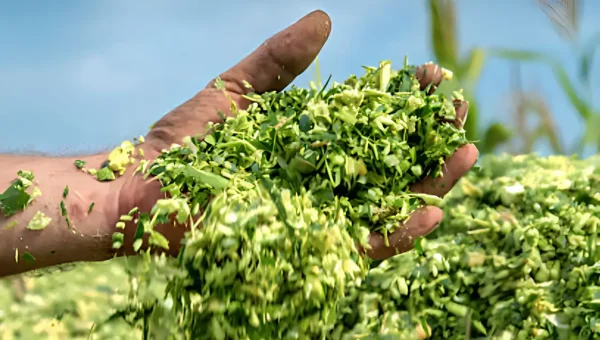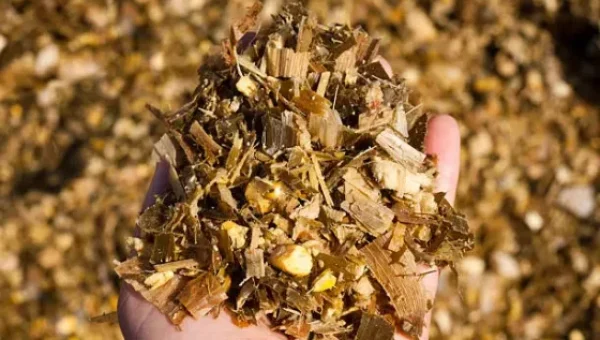SILAGE


Science of Silage
Silage is a type of preserved forage made from green crops like grass, corn, or sorghum that are cut and stored under anaerobic (oxygen-free) conditions. This process, known as ensiling or fermentation, converts the sugars in the plant into acids (mainly lactic acid), which preserves the forage and retains its nutritional value for livestock feeding. The anaerobic environment is key, as it prevents spoilage by harmful microbes, allowing the silage to be stored for extended periods without significant degradation.
Best Quality Silage Characteristics
- Moisture Content :- Proper Moisture Content of around 60-70%
- Growth of Bacteria :- Tightly packed limits oxygen exposure to promote the growth of beneficial lactic acid bacteria
- Good Fermentation Process :- Slightly sweet, acidic smell, indicating a good fermentation process
- Uniform Texture :- Uniform Texture to improve packing and fermentation.
- Low Ph :- Low pH of 3.5 to 4.5


Baled Silage
- Increase in milk yield.
- Improved animal gut and reproductive health.
- Aflatoxin Free Milk.
- Reduced Feed Cost.
- Increased Profitability

Science of Silage
Silage is a type of preserved forage made from green crops like grass, corn, or sorghum that are cut and stored under anaerobic (oxygen-free) conditions. This process, known as ensiling or fermentation, converts the sugars in the plant into acids (mainly lactic acid), which preserves the forage and retains its nutritional value for livestock feeding. The anaerobic environment is key, as it prevent spoilage by harmful microbes, allowing the silage to be stored for extended periods without significant degradation.

Best Quality Silage Characteristics
- Moisture Content :- Proper Moisture Content of around 60-70%
- Growth of Bacteria :- Tightly packed limits oxygen exposure to promote the growth of beneficial lactic acid bacteria
- Good Fermentation Process :- Slightly sweet, acidic smell, indicating a good fermentation process
- Uniform Texture :- Uniform Texture to improve packing and fermentation.
- Low Ph :- Low pH of 3.5 to 4.5

Baled Silage
- Increase in milk yield.
- Improved animal gut and reproductive health.
- Aflatoxin Free Milk.
- Reduced Feed Cost.
- Increased Profitability
How to make baled silage
Haevesting
Inoculation
Compaction
High density compaction resulting more feed in less space.
